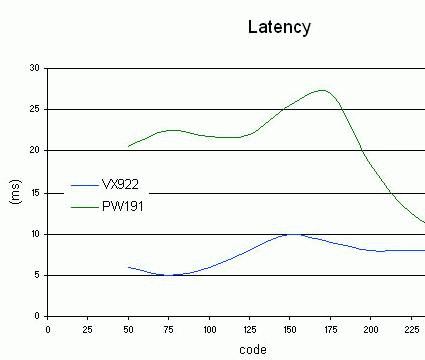Asus PW191 LCD: Looks Can Deceive
Asus PW191: Old-School Latency
We measured the panel's actual latency.
The curve shows the different latency values for different levels of gray. A black-white alternation is shown on the curve by a point at X-axis 255, a black-gray alternation produces a point at X-axis 125, a black-dark gray alternation appears as 50, etc.
The official ISO latency rating specified by the manufacturer is only for black/white (0/255) transitions. While the value we measured agrees with the manufacturer on this point, it's not of much value in judging the actual responsiveness of the panel in practice.
Asus didn't use overdrive technology for this panel. The result is that it's not really a contender as far as responsiveness is concerned. The latency reached 25 ms in the worst case. In the best case, the ISO latency claimed in the specs was attained, give or take about 1 ms. It's no catastrophe, but this kind of latency takes us back a year or so, to the days of the Hyundai L90D+. And unfortunately, as we'll see, not using overdrive hasn't solved the problem of video noise.
Get Tom's Hardware's best news and in-depth reviews, straight to your inbox.
